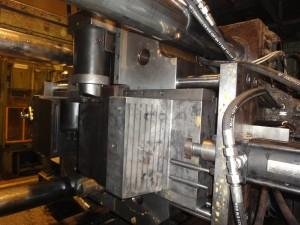The most important aspects of die manufacturing and production for aluminum alloy stamping dies

Material properties of aluminum alloys include being relatively soft, expensive, and easily broken. Additionally, some aluminum alloy products require post-production processing, such as wire drawing, anodizing, and other processes, which are particularly susceptible to top scratches and scratches during stamping production. When it comes to mold manufacturing company, the following aspects should be given particular consideration. Point: 1. If the number of projects is not affected, the punching holes should be arranged as far back as possible behind the project punching, and even for products with a large number of punching holes, one more project should be considered, and the punching holes should be arranged as far back as possible behind the punching hole.
To 2. Because the aluminum material is soft and the die casting mold is easily blocked, a gap equal to 10% of the thickness of the bilateral material should be included in the design of the mold gap.
The straight depth of the knife-edge is more appropriate for 2MM, while the taper is more appropriate for °. To 3, because the aluminum material is prone to producing aluminum chips during bending and forming, it will cause spot damage and indentation when bending and forming.
It is necessary to cover the aluminum raw material with polyethylene film. In the case of rollers and electroplating, the forming block is polished and hard chrome plated before being used. That's better.4. If there is a flattening and flattening process of 180° for the stamping parts that require post-anode processing, the product will not be able to be completely compressed. Complete compression will result in acid-spitting, and a seam must be left to allow the acid to flow out smoothly and efficiently. A limit block must be created as a result of this process, and the calibration die casting mold must be higher than the mold in order to be effective. To 5, keep the crimping line as short as possible because aluminum is a brittle and easily cracked material, especially when it comes to reflexed edges.
Even if it has already been completed, make the crimping line a little wider and lighter in color. To the sixth degree, all-aluminum knife edges must be cut with a slow-moving wire in order to avoid burrs and irregular blanking.

